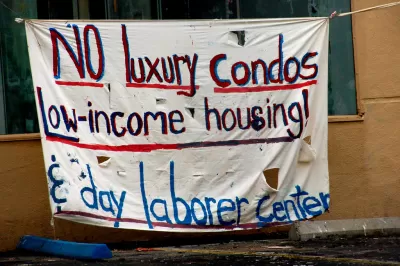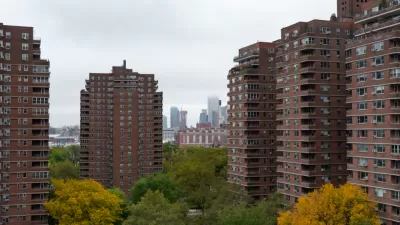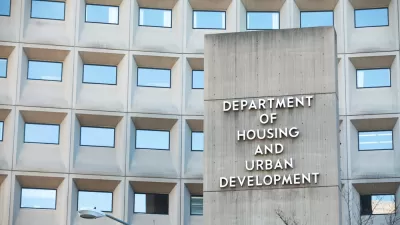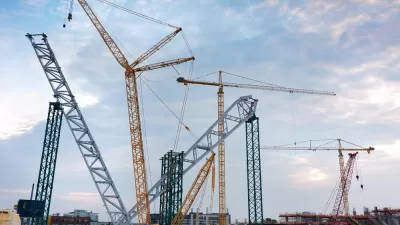An in-depth feature in Architect magazine surveys the affordable housing landscape and finds architects, planners, and developers trying to find a better way through an inefficient system.

Karrie Jacobs details the state of affordable housing in the United States during the "Age of Trump," tracing the origins of the country's policies to the Nixon Administration to current day.
The Nixon Administration's "Section 8 vouchers issued by the Department of Housing and Urban Development (HUD) to subsidize rents in privately owned properties and Community Development Block Grants awarded by HUD to states and cities based on population," are still very much in use today, explains Jacobs. "It’s a financial toolkit filled with an alphabet soup of acronyms, programs tagged by the word 'section' or 'title,' plus a smorgasbord of tax credits, zoning incentives, and rent subsidies."
Jacobs writes that the traditional approach was already flawed, and now the Trump Administration's proposed budget cuts for affordable housing programs threaten to make a bad situation worse.
Amid that stark landscape, however, Jacobs identifies reasons for hope in the thoughtful approach to the challenges of affordable housing, such as the work of New York-based Bernheimer Architecture, which since 2011 has "become a key player in designing public housing for the 21st century, competing via the city’s Request for Proposals process to build new projects, mostly in collaboration with private, for-profit developers." Jacobs details the design decisions that Bernheimer Architecture used to contribute to housing affordability, and also the "art of financing" that makes it all possible.
FULL STORY: Affordable Housing in the Age of Trump

Planetizen Federal Action Tracker
A weekly monitor of how Trump’s orders and actions are impacting planners and planning in America.

Congressman Proposes Bill to Rename DC Metro “Trump Train”
The Make Autorail Great Again Act would withhold federal funding to the system until the Washington Metropolitan Area Transit Authority (WMATA), rebrands as the Washington Metropolitan Authority for Greater Access (WMAGA).

The Simple Legislative Tool Transforming Vacant Downtowns
In California, Michigan and Georgia, an easy win is bringing dollars — and delight — back to city centers.

The States Losing Rural Delivery Rooms at an Alarming Pace
In some states, as few as 9% of rural hospitals still deliver babies. As a result, rising pre-term births, no adequate pre-term care and "harrowing" close calls are a growing reality.

The Small South Asian Republic Going all in on EVs
Thanks to one simple policy change less than five years ago, 65% of new cars in this Himalayan country are now electric.

DC Backpedals on Bike Lane Protection, Swaps Barriers for Paint
Citing aesthetic concerns, the city is removing the concrete barriers and flexposts that once separated Arizona Avenue cyclists from motor vehicles.
Urban Design for Planners 1: Software Tools
This six-course series explores essential urban design concepts using open source software and equips planners with the tools they need to participate fully in the urban design process.
Planning for Universal Design
Learn the tools for implementing Universal Design in planning regulations.
Smith Gee Studio
City of Charlotte
City of Camden Redevelopment Agency
City of Astoria
Transportation Research & Education Center (TREC) at Portland State University
US High Speed Rail Association
City of Camden Redevelopment Agency
Municipality of Princeton (NJ)





























